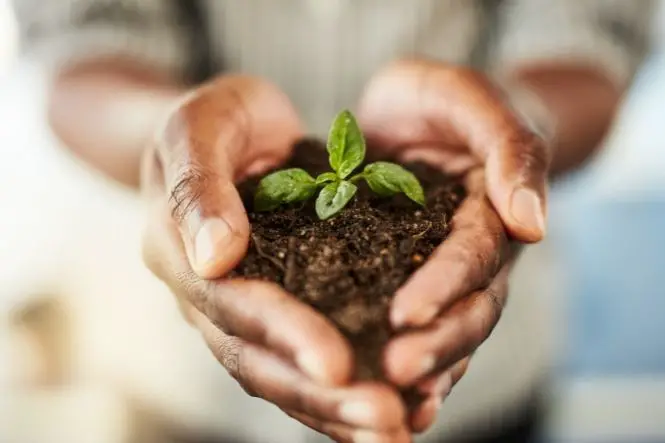A seed is a minute dormant plant that is waiting for the right conditions to grow (germinate). Seeds range from orchid seeds weighing a millionth of a gram to seeds from the coco-de-mer palm tree that weigh around 20 kg.
Table of Contents
Conditions for Growth
All seeds need warmth and water, but some seeds also need their seed coats to be damaged, have to be frozen and thawed, or even need to be eaten by animals in order to germinate.
Food in a Seed
Seeds contain food for the seedling, as it cannot make its own food from the sun (photosynthesis) until it has grown leaves. It is this stored food, which is in the cotyledon (inner part of the seed), that makes seeds, including nuts, good and nutritious for animals and humans to eat.
Some seeds have one cotyledon and are called monocotyledons or monocots; these include the grasses and other plants with leaves with parallel veins. Others have two cotyledons and are called dicotyledons or dicots; these generally include broad-leaved flowering plants with leaf veins that form a network.
Seed Leaves
The first leaves to emerge are called the seed leaves. These often look different from the adult leaves, which are called the true leaves. For some plants, such as beans, the seed leaves are actually the cotyledons, which turn green so that the young plant can start to photosynthesise food from the sun.
Watching Seeds Grow – Growing a Bean in a Jar
Soak a runner bean seed in water overnight. Loosely roll up a few sheets of kitchen towel and push the roll into a glass jar to line it. Put the soaked runner bean seed between the glass and the kitchen towel and put some water into the bottom of the jar, which will soak into the paper towels to keep the bean damp. The bean should start to shoot over the next few days. What happens to the seed if it doesn’t get any water?
Watching Seeds Grow – Growing Mustard and Cress
To grow mustard and cress, put a couple of layers of kitchen towel on a tray or plate, dampen it and sprinkle over a fine layer of mustard and cress seeds. The seeds might start to germinate within a few hours, and should be ready to eat within a week. If the seeds are sprinkled onto the damp paper through a stencil, the mustard and cress will grow in the shape of the stencil – perhaps an age or a name for a birthday party.
Watching Seeds Grow – Growing Sprouted Seeds
Like growing mustard and cress, growing bean and seed sprouts shows both how seeds germinate and provides food!
To grow bean sprouts, put a layer of beans or other seeds, such as mung beans or alfalfa, in the bottom of a jar. Put a piece of cloth other the top of the jar and secure it with an elastic band. Put some tepid water in the jar, swirl it round and tip it out through the muslin. Leave the jar in a warm dark place.
Repeat the rinsing and pouring away every morning and evening, and the seeds should sprout in a few days – eat the sprouts when they are five to ten centimetres long.
Try sprouting the seeds in a warm light place or in a cold dark place – what difference does it make?



